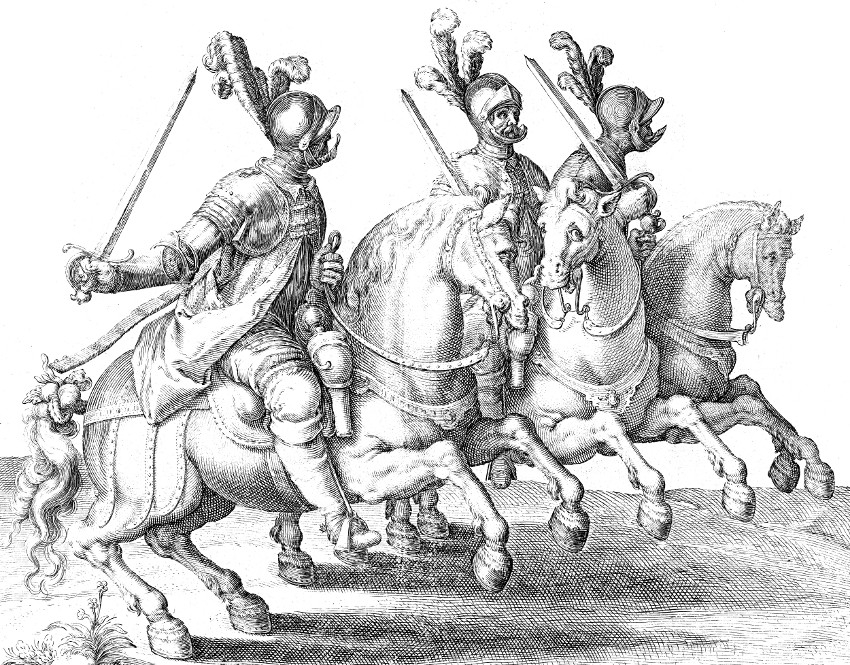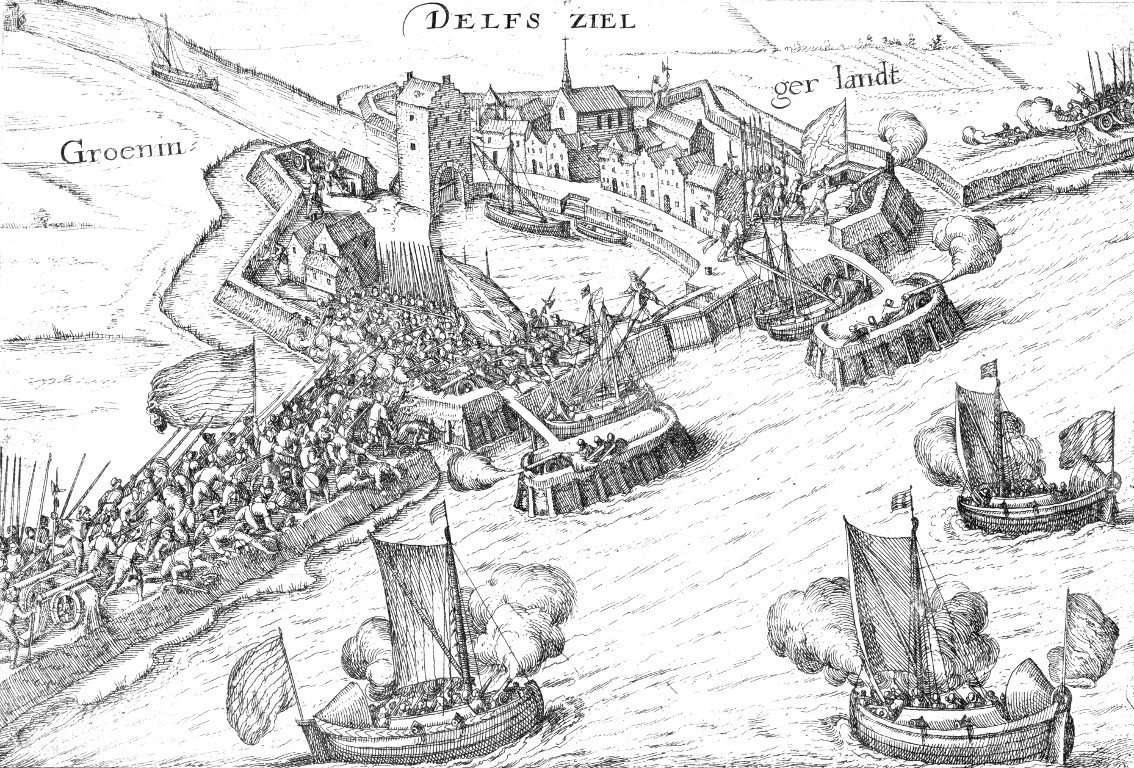It's time for another interview on the Osprey blog - today we're talking with author of MAA 513: Dutch Armies of the 80 Years’ War 1568–1648 (2): Cavalry, Artillery & Engineers, Bouko de Groot.
- Osprey’s web store sold out of the first print of volume one (MAA 510) within three weeks. How about that?
Yes, that was pretty amazing. I guess a lot of people have been waiting for someone to finally fill in this grey area of the map and I’m very happy to be that ‘map maker’. Instead of simply distilling existing Dutch literature (which lacks many in depth details), I decided early on to go back to the real sources, written by the men who experienced the period and developed the reforms and its military revolution. The importance of that revolution – the introduction of drill – is still overlooked by many, I think primarily because they wrongly assume regularly exercising is the same as being drilled.
- We all know the infantryman’s individual drill, from the detailed drawings of De Gheyn. What about the cavalry?
Maurice of Nassau reformed his cavalry along the same lines as his infantry. Individual drill was introduced (including similar sets of drawings), and also unit drill, which made the already small units much more manoeuvrable. He preferred lancers at first, but their high training cost and decreasing impact, due to increasingly thicker armour, made him transform all his heavies into cuirassiers. One of the myths circulated about the 80 Years’ War is that there wasn’t much cavalry action (supposedly because the whole country was one vast swamp, crisscrossed by dikes). But the States’ army tended to have the same horse-to-foot ratio as land-based armies of the time. Until well into the 1620s, heavily armoured cuirassiers formed the vast majority of Maurice’s cavalry: imagine a Napoleonic cuirassier, but clad in metal from the knee up, with bullet-proof (yes!) breast, back and head. In most battles, cavalry was the deciding factor. In the final years, along the swampy coast of Flanders, cavalry even decided many a siege, by fanning out far and wide to take vital landmarks and cut off enemy forces.
 Maurician pistoleers (called cuirassiers), as they would have looked in the beginning, at the battle of Turnhout in 1597: no mythical caracoling pistoleers but real hard charging swordsmen (1590s, by Jacob de Gheyn, Rijksmuseum Amsterdam).
Maurician pistoleers (called cuirassiers), as they would have looked in the beginning, at the battle of Turnhout in 1597: no mythical caracoling pistoleers but real hard charging swordsmen (1590s, by Jacob de Gheyn, Rijksmuseum Amsterdam).
- Drill and standardization: was that used to reform artillery as well?
The artillery’s main problems were a lack of standardization, the great weight of the guns, and the logistical nightmare of keeping up with a marching army and the volumes of fire during a siege. Standardizing the guns themselves wasn’t enough. The army’s stores and train also needed to be organized. Under Maurice, rigorous bookkeeping was introduced, together with minimum stock requirements, but also standard carriages. He himself was heavily involved in developing a whole new type of artillery, weighing a fraction of the normal type and ideally suited for battlefield use, basically the first successful infantry guns. Another type he specialized was what would later be called horse artillery; highly mobile and independent guns used to block or take landmarks. Although the States’ army didn’t name the concept of ‘battery’, it did organize its battlefield artillery in groups of six.
- In volume one, you included a chronological list of over 100 battles, mentioning that volume two would have a list of sieges. Will it?
Yes, I thought it was better to split them up. Volume two has the same map as volume one, but now shows all the sieges. There were more than 150, or an average of two sieges a year, during the 80 years of war. That may seem a lot for a small area like the 17 Provinces (today’s Netherlands, Belgium, Luxemburg and parts of northern France and western Germany). But even back then, the area had a high density of towns and cities. Plus the real focus of the war was on money and who had most to spend. Cities are vital in controlling income, resources and traffic. For those reasons, right from the beginning, sieges played an important role. The start of the war is commonly put at the date of the Battle of Heiligerlee in 1568 (actually one of several battles fought near that monastery), but the general rebellion really got started with the capture and – more importantly – the retention of the first city, Den Briel in 1572. The number of sieges is even higher if we include small forts and the like. However, as there were too many of these smaller actions to cover, only a handful of them ̶ the really important ones – made the cut.
- Sieges are time consuming and costly: is there a reason why there were more sieges than battles?
As the war went on, sieges became more professional and more business-like. Army logistics and finances became very well organized under Simon Stevin, a leading mathematician of his day (Maurice co-wrote several treatises with him). Everything had to be accounted and thus planned for. As a result, the outcome of sieges could be calculated, whereas the outcome of battles, of course, could not. That’s why Maurice – but also his opponents – would only resort to battle if there was no other option, or if he held the advantage. Sometimes he’d march and deploy his army merely as a threat, taking the initiative away from his opponent. He’d sooner march off in good order than risk a battle against a similar sized army - being able to march off without a single scratch time and time again is in itself a remarkable feat. In Germany, sieges seem to have played a much smaller role. Maurice was proven right: none of those big, bloody 30YW battles were ever really decisive and victorious armies rarely fared any better than their defeated opponents in the months after.
All that aside, the fighting during sieges tended to be more vicious and much bloodier than open battle, although usually on a smaller scale. Besides assaults and trench raids above the ground, there was underground bloodshed too, when one mining party would meet another. The fights might be as small as two versus two, but in narrow, hot and suffocating tunnels, without mercy, and without survivors on the losing side.
 ‘Combined arms’ assault by Maurice’s army on Delfzijl in 1591, blocking Groningen’s major sea access (NE of The Netherlands, opposite Emden). Royalist (pro-Spain) Groningen would fall three years later (1592, by Frans Hogenberg, Rijksmuseum Amsterdam).
‘Combined arms’ assault by Maurice’s army on Delfzijl in 1591, blocking Groningen’s major sea access (NE of The Netherlands, opposite Emden). Royalist (pro-Spain) Groningen would fall three years later (1592, by Frans Hogenberg, Rijksmuseum Amsterdam).
- Do you look at the armies that were needed to fight the battles and sieges as well?
Well yes, at the end of volume two, I explain how the different arms cooperated at the highest level. We are lucky that many sketches have survived of how the States’ armies deployed. Interestingly though, the exact position of the artillery is hardly ever shown, let alone the location of the new, relatively secret ‘arms’, the infantry guns and the dedicated skirmisher companies. However diaries and the like provide us with that missing information. If you look at the diagram of such an army deployment it looks quite modern and could have been drawn two–300 years later. That raises some interesting questions, especially if you know that the army had already partly switched to flintlocks by the end of the war. Perhaps you are familiar with the discussions in the eighteenth and nineteenth centuries about the benefits of advancing (part of) the foot with unloaded muskets and bayonets fixed, and about charging in some kind of columnar formation instead of an unbroken line. One then wonders how a 1630s States’ army would have fared in that environment, because it basically was a line of advancing columns, where the front of each column was dedicated to melee and the rear to fire (fanning out ‘platoon’-wise), supported by canister shooting lightweight guns advancing alongside in the intervals. Anyway, that’s not a discussion for this title, but nevertheless quite interesting.
- You just mentioned diagrams: volume one had several very informative diagrams. What about volume two?
The same. In volume one the infantry formations were explained using diagrams, from ‘batallion’ right up to ‘brigade’, and those compared to other armies. In volume two I do the same with cavalry, plus, like I said, the army. Apart from those four diagrams and the map with sieges, you’ll find a table with the specifications of post-1620 artillery types, and of course the beautiful colour illustrations by Gerry Embleton: 12 cavalry (four mounted), two artillery pieces, three other men and nine pennons and banners. And meanwhile my research continues: it sometimes seems as if in every new period text I read, I discover a battle that’s been forgotten. Those and the steadily growing bibliography can be found on 80yw.org. Expect more of my 80YW titles with Osprey in 2018!
If you enjoyed this, then be sure to have a read of our first interview with Bouko back in March, by clicking here. Bouko's newest book Dutch Armies of the 80 Years’ War 1568–1648 (2) is now available, click the title to get your copy.

Comments
You must be logged in to comment on this post. Click here to log in.
Submit your comment